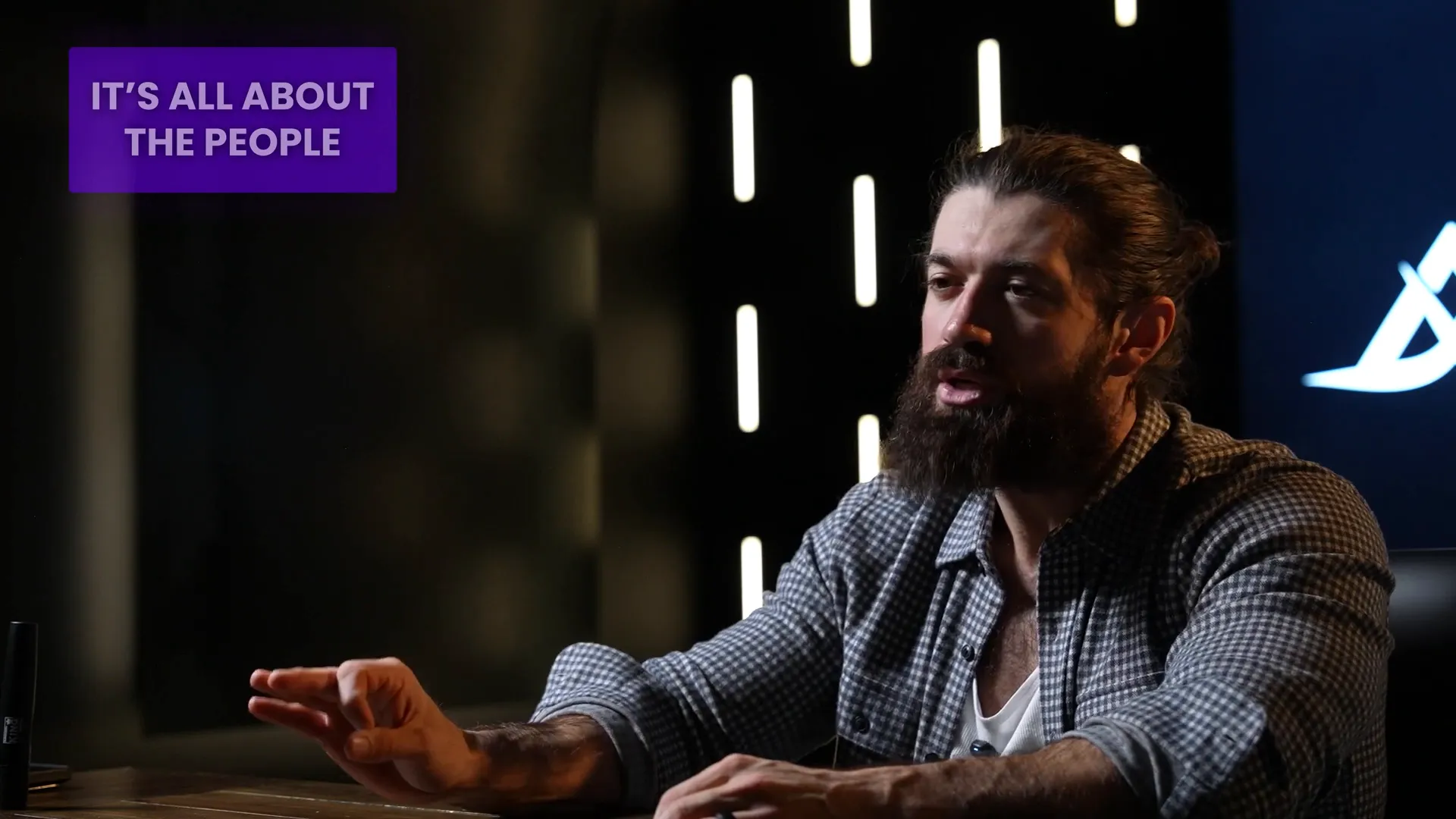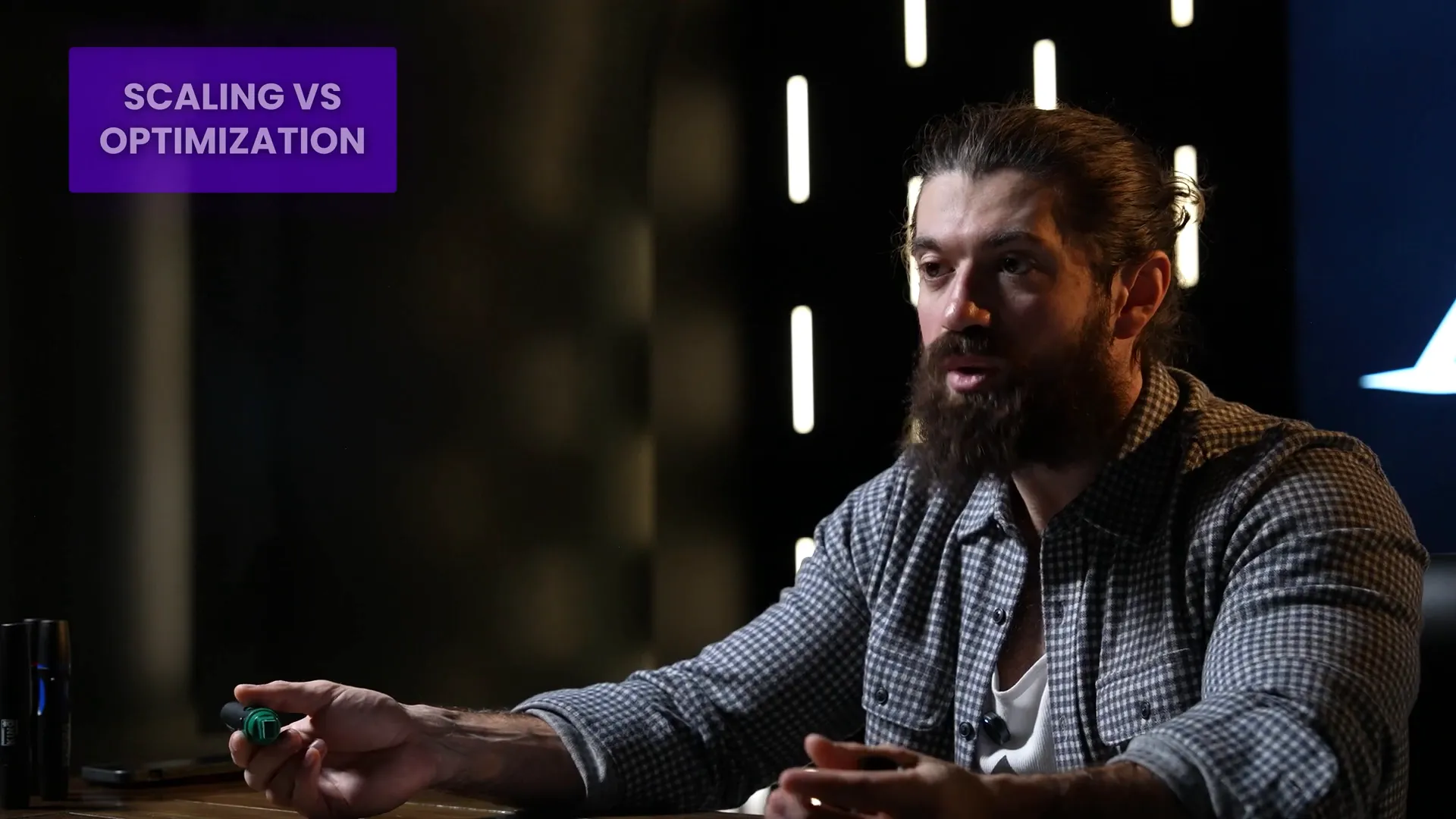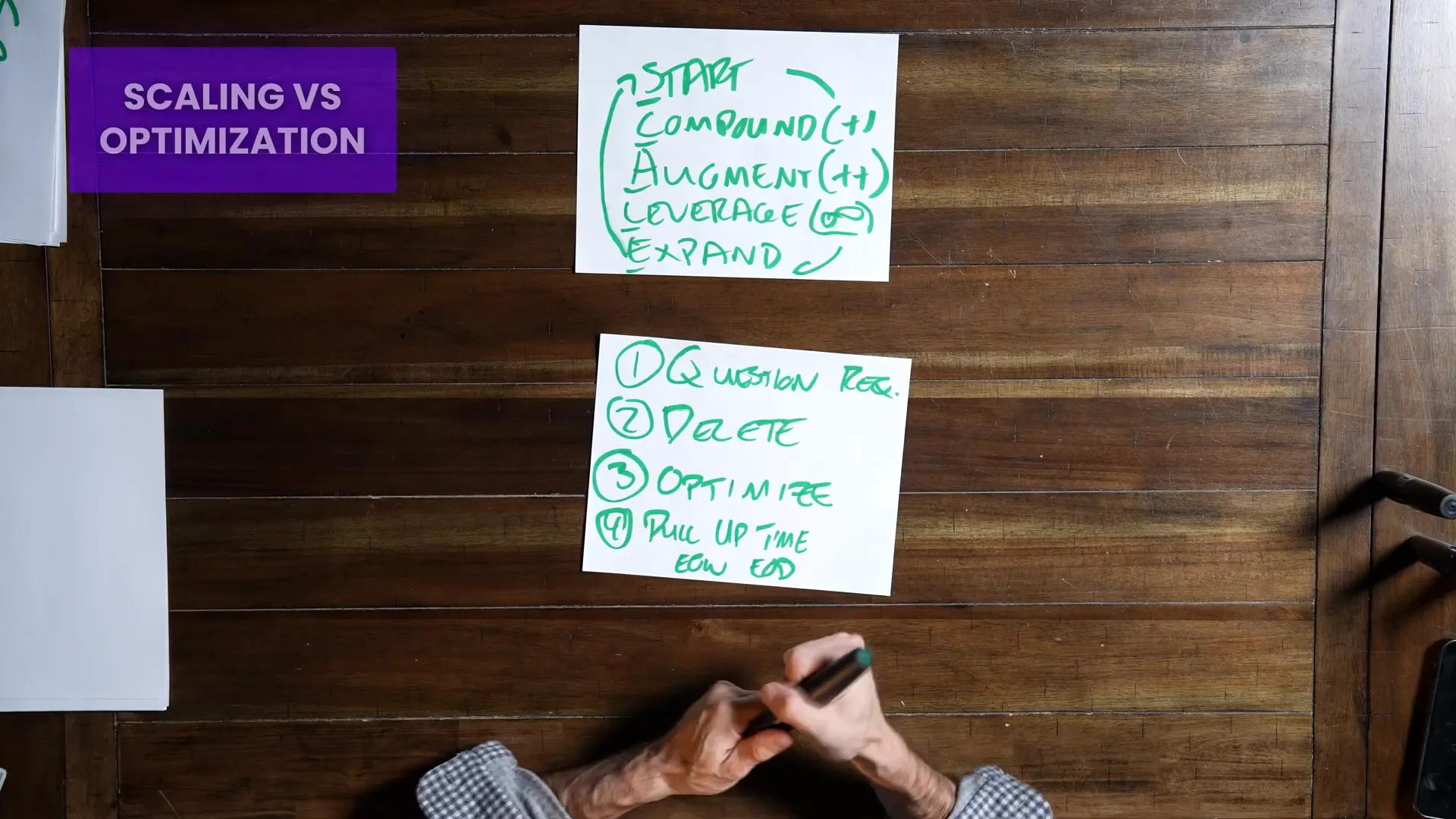No BS Business Strategies to Dominate in 2025
As we gear up for 2025, Alex Hormozi shares his no-nonsense business advice to help entrepreneurs thrive. With years of experience and impressive success, Hormozi emphasizes the importance of focus, strategic hiring, and leveraging existing resources to reach new heights in business.
Setting Fewer Goals
In the fast-paced world of business, the tendency to set numerous goals can be overwhelming. Instead, focusing on fewer, more impactful objectives allows for better resource allocation and clarity in execution. By narrowing your focus to just a handful of critical goals, you can channel your energy more effectively. This approach not only reduces the feeling of being spread too thin but also enhances your team's ability to align and execute efficiently.

The Reality of Growth
Growth in business is rarely linear. The expectation that progress will follow a neat, upward trajectory often leads to disappointment. In reality, growth can involve periods of stagnation followed by bursts of improvement. Understanding this dynamic is crucial for setting realistic expectations and developing strategies that accommodate these fluctuations.

Growth Patterns
- Flatlining: Expect periods where growth stalls.
- Breakthroughs: Identify moments of significant improvement.
- Consistency: Focus on maintaining momentum after breakthroughs.
Prioritizing Key Objectives
Effective leadership requires the ability to prioritize objectives. When faced with multiple tasks, identifying the most critical one can lead to greater success. Concentrating resources on a single priority not only accelerates progress but also fosters team alignment.

Strategies for Prioritization
- Identify the objective that will have the most significant impact on your vision.
- Allocate resources exclusively to that priority.
- Monitor progress and adjust as necessary to ensure continued alignment.
Understanding Supply vs Demand Constraints
A key aspect of business strategy is understanding whether you are supply or demand constrained. This distinction can significantly influence your approach to growth and resource management. For instance, a supply-constrained business may struggle to find qualified personnel, while a demand-constrained business may have an abundance of resources but lack customers.

Identifying Constraints
- Supply-Constrained: Focus on talent acquisition and retention strategies.
- Demand-Constrained: Concentrate on marketing and customer acquisition efforts.
Building a Strong Brand
A robust brand can serve as a significant leverage point in overcoming challenges. By investing in your brand, you can enhance customer loyalty, attract new clients, and ultimately increase your market share. A well-recognized brand simplifies many operational challenges, including lead generation and customer retention.

Key Elements of Brand Strength
- Consistency in messaging and identity.
- Engagement with your target audience.
- Delivering on your brand promise consistently.
The Importance of Talent Acquisition
Talent acquisition is often the most critical factor in a business's success. Attracting the right people can create a ripple effect that enhances performance across the board. Companies that prioritize talent are better positioned to innovate and adapt to market changes, ensuring long-term success.

Strategies for Attracting Talent
- Offer competitive compensation packages.
- Create a positive workplace culture.
- Implement referral programs to leverage existing employees' networks.
In the context of GFunnel, understanding these principles can be pivotal. GFunnel provides an all-in-one business ecosystem that can streamline your operations, enhance your branding efforts, and support your talent acquisition strategies, ultimately helping you focus on what truly matters for your business growth.
Focus and Strategic Prioritization
In today's business landscape, the ability to focus on strategic priorities is paramount. As leaders, we must hone in on the objectives that will drive the most significant impact. This means identifying key results that align with our overarching business goals and concentrating our resources on achieving them.

The Importance of Focus
When businesses spread themselves too thin, they often find themselves stagnating. Strategic focus allows for deeper engagement with critical initiatives, enabling teams to achieve more substantial results. This is where the concept of 'less is more' becomes highly relevant; by focusing on fewer objectives, we can drive better performance across the board.
Strategies for Maintaining Focus
- Identify Core Objectives: Start by determining which objectives are most aligned with your business vision.
- Limit Distractions: Eliminate tasks and projects that do not contribute to your core objectives.
- Communicate Clearly: Ensure that your team understands the priorities and how their roles contribute to achieving them.
Eliminating Waste and Streamlining Processes
Streamlining processes is essential for enhancing productivity and reducing operational waste. Businesses often accumulate unnecessary processes that drain resources without yielding significant returns. By critically evaluating each process, you can identify and eliminate waste, thereby improving efficiency.

Identifying Waste in Processes
To effectively streamline operations, it's crucial to identify areas of waste. This includes anything from redundant meetings to outdated practices that no longer serve a purpose. A thorough review can reveal opportunities for improvement that can lead to substantial gains in efficiency.
Steps to Streamline Processes
- Conduct a process audit to identify inefficiencies.
- Engage team members in discussions about what can be improved.
- Implement changes gradually, monitoring their impact on productivity.
Leveraging Community and In-Person Experiences
Building a strong community around your business can be a game-changer. Engaging with clients and stakeholders in person fosters relationships and creates loyalty. These interactions can lead to valuable insights into customer needs and preferences, enhancing your ability to serve your market effectively.

The Value of In-Person Connections
In-person experiences can significantly enhance your brand's perception and trustworthiness. Whether through networking events, workshops, or conferences, face-to-face interactions often lead to stronger relationships and collaborations.
Tips for Building Community
- Host Events: Organize events that bring together customers, partners, and industry leaders.
- Engage on Social Media: Use social platforms to foster discussions and share experiences.
- Follow Up: Maintain relationships by following up after events and continuing the conversation online.
Personal Discipline and Work Ethic
A strong work ethic and personal discipline are vital for achieving success in any entrepreneurial endeavor. The dedication to putting in the hours and consistently pushing towards your goals can set you apart from the competition.

The Role of Discipline in Business
Discipline is not just about working hard; it's about working smart. This means prioritizing tasks, setting boundaries, and ensuring that your time is spent on activities that drive results. Entrepreneurs who embrace this mindset often see higher levels of success.
Building Personal Discipline
- Establish a routine that aligns with your productivity peaks.
- Set clear, achievable goals to maintain focus.
- Hold yourself accountable through regular self-assessment.
Creating a Culture of Accountability
A culture of accountability within your organization fosters trust and encourages high performance. When team members know they are responsible for their contributions, they are more likely to take ownership of their work.

The Benefits of Accountability
Accountability leads to a more engaged workforce. When employees feel responsible for their results, they are more motivated to perform at their best. This culture can significantly enhance productivity and drive business success.
Steps to Foster Accountability
- Set Clear Expectations: Communicate what success looks like for each role.
- Provide Feedback: Regularly discuss performance and areas for improvement.
- Recognize Achievements: Celebrate successes to reinforce positive behavior.
The Power of Feedback and Continuous Improvement
Feedback is a powerful tool for personal and organizational growth. Encouraging a culture of continuous improvement allows businesses to adapt and thrive in changing environments.

Implementing Feedback Loops
Creating effective feedback loops can lead to significant enhancements in performance. By regularly seeking input from employees and customers, businesses can identify areas for improvement and implement changes that drive better results.
Strategies for Effective Feedback
- Solicit feedback regularly through surveys and direct conversations.
- Act on the feedback received to show that it is valued.
- Encourage a culture where feedback is seen as a tool for growth, not criticism.
By integrating these principles into your business strategy, you can leverage the capabilities of GFunnel, an all-in-one business ecosystem. GFunnel can help streamline your operations, enhance your community engagement, and support your accountability initiatives, setting the stage for sustained growth and success.
Optimizing Conversion Rates
Optimizing conversion rates is critical for any business aiming to thrive in 2025. It involves analyzing customer behavior, understanding what drives them to take action, and refining processes to maximize outcomes. One effective approach is to question existing requirements and eliminate unnecessary tasks that do not contribute to conversion goals.

Questioning Requirements
Start by asking why you are doing what you're doing. Each department must define its purpose clearly. For example, if you're in the content team, your goal should be to produce high-quality content efficiently. Anything that doesn't facilitate that is simply waste. This mindset shifts focus toward activities that enhance conversion.
Deleting Non-Essential Tasks
Once you identify what matters, the next step is to delete everything that does not contribute to your goals. This can include unnecessary meetings, redundant processes, and low-impact projects. By streamlining operations, teams can focus on high-value tasks that significantly boost conversion rates.

Optimizing for Results
After removing non-essential tasks, prioritize what yields the best results for the least effort. This means evaluating current processes and identifying which ones drive the most conversions. Focus your resources on these high-impact activities, and you'll find that you can increase efficiency dramatically.

Automating Processes
As you refine your approach, consider automation. Automating repetitive tasks frees up valuable time for your team, allowing them to concentrate on strategic initiatives that enhance conversion rates. By leveraging technology, you can scale your operations without a proportional increase in costs.

Navigating Challenges and Risks
Every business faces challenges and risks, especially as they scale. Understanding these risks and developing strategies to mitigate them is essential for sustainable growth. Recognizing the difference between short-term pain and long-term gain can help you make informed decisions.
Identifying Common Challenges
- Underpricing: Many businesses struggle with pricing strategies. If you're at full capacity but not profitable, it’s time to reevaluate your pricing model.
- Overcompensation: Avoid paying employees excessively in ways that don’t align with performance. This can lead to inefficiencies and stunted growth.
- Overextension: Expanding too quickly can dilute your focus and resources. Ensure that your current operations are stable before venturing into new areas.

Making Tough Decisions
When faced with challenges, make decisions based on data and long-term vision rather than fear. For instance, if you need to raise prices, communicate the value clearly to your customers. If you have underperforming employees, have the courage to let them go to maintain team productivity and morale.

Harnessing the Power of Data
Data is a powerful tool for driving business decisions. By collecting and analyzing relevant data, you can gain insights into customer behavior, market trends, and operational efficiency. This information is crucial for making informed decisions and optimizing your strategies.
Establishing Key Metrics
Identify the key performance indicators (KPIs) that matter most to your business. Metrics such as customer acquisition cost, conversion rates, and customer lifetime value can provide valuable insights into your performance. Regularly review these metrics to identify trends and areas for improvement.

Implementing Data-Driven Strategies
Once you have established your key metrics, use them to inform your strategies. For example, if you notice a drop in conversion rates, investigate potential causes and adjust your marketing tactics accordingly. This proactive approach will keep your business agile and responsive to changing market conditions.
Continuous Improvement
Data collection should not be a one-time effort. Foster a culture of continuous improvement by regularly revisiting your data and adjusting your strategies. This iterative process will help you stay ahead of competitors and adapt to new challenges as they arise.

Conclusion: Your Path to Success in 2025
As we look ahead to 2025, the importance of optimizing conversion rates, navigating challenges, and harnessing the power of data cannot be overstated. By focusing on these key areas, you can set your business up for sustainable growth and success. Remember, the most adaptable players in the business ecosystem will thrive, so stay flexible, informed, and ready to pivot as needed.
Utilizing frameworks like GFunnel can streamline these processes, ensuring that your focus remains on high-impact activities. With an all-in-one business ecosystem, GFunnel can support your efforts to optimize conversions, navigate risks, and leverage data effectively. This integrated approach will empower you to achieve your business goals and dominate in 2025.
Made with VideoToBlog